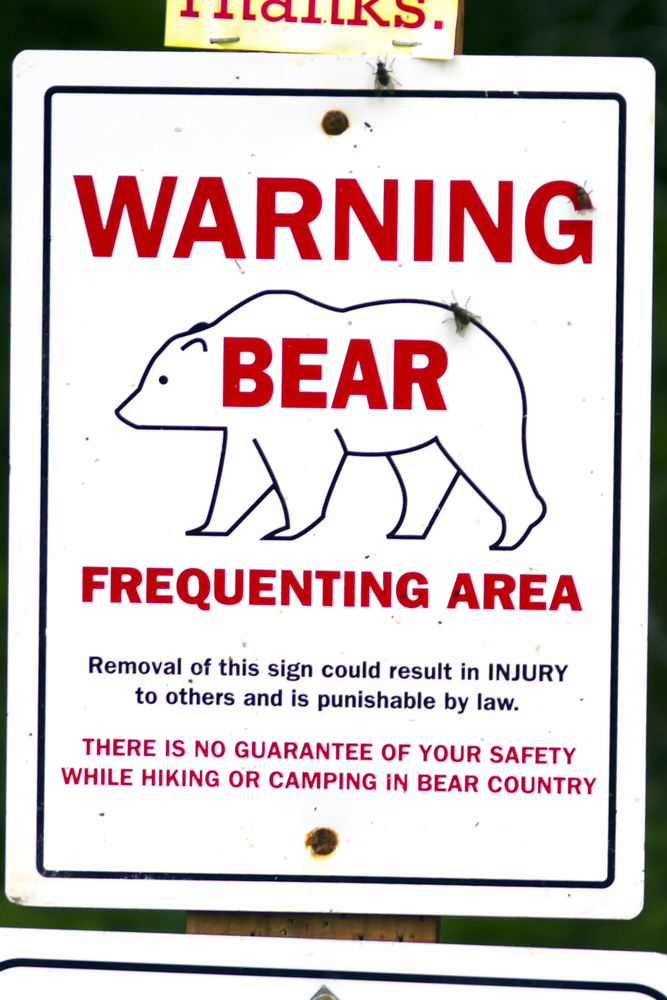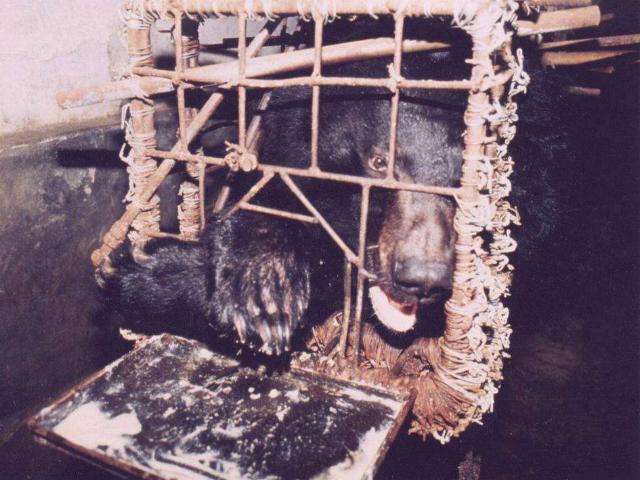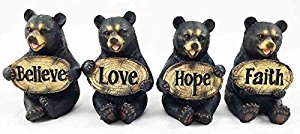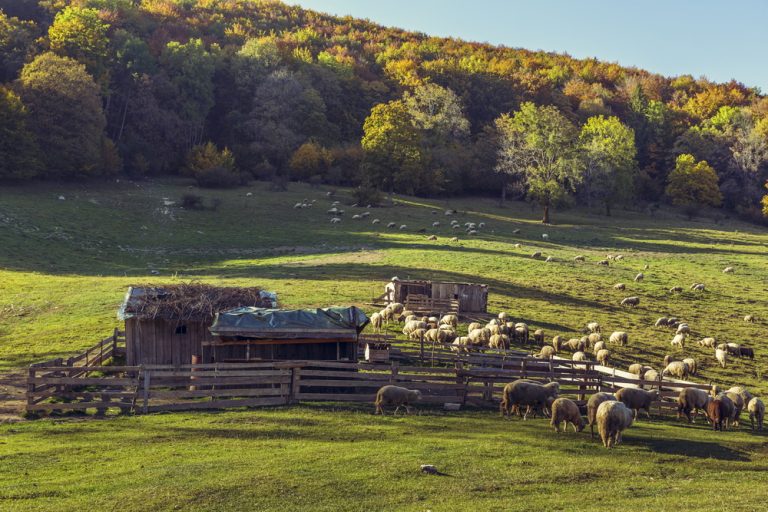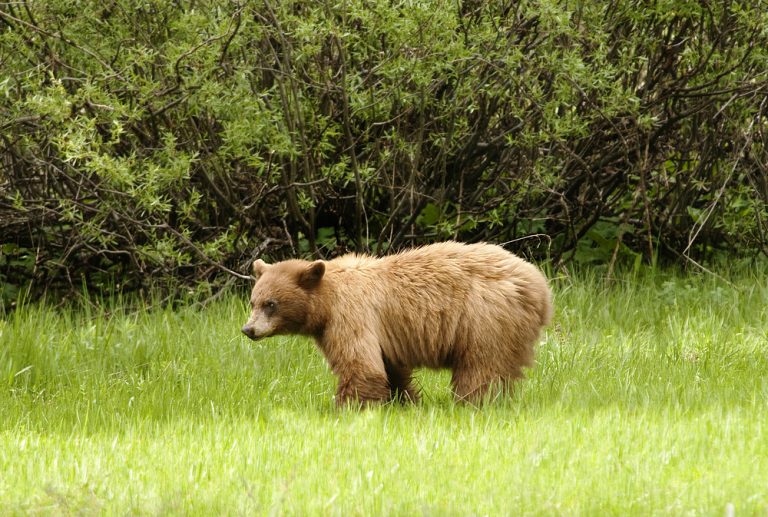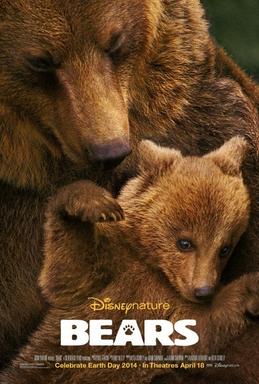10 Intriguing Facts About The Spirit Bear
The Kermode Bear or Spirit Bear sounds unreal but in fact, it’s very real and extremely rare.
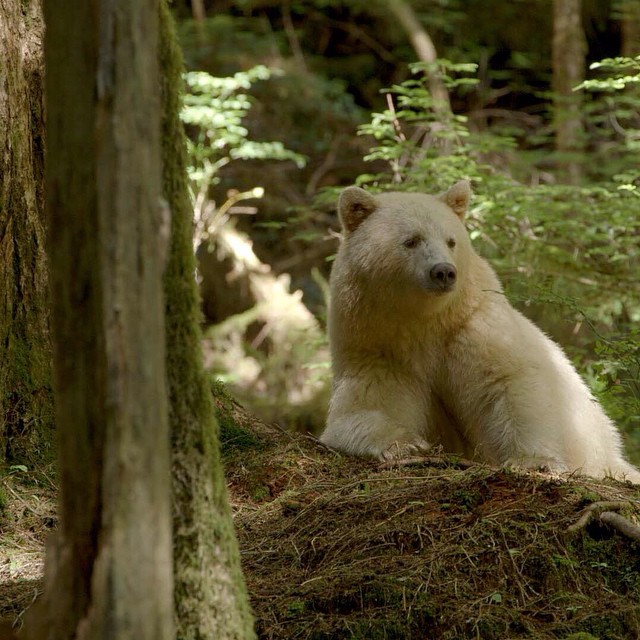
When you hear terms like Spirit Bear, Ghost Bear, or Spirit Bear of the Forest, you may think that’s a figment of someone’s imagination.
But it’s not.
The Spirit Bear or Kermode Bear is real but extremely rare. Read on to find out how they get this unique coloration and learn other interesting facts about Spirit Bears.
10 Interesting Facts About The Spirit Bear
1) The Spirit Bear Is Actually A White Black Bear
The Kermode bear is categorized as a subspecies of the American Black Bear.
They share the same characteristics as other black bears except that they have white or creamy fur, brown eyes, dark nose pads, and nearly white claws.
Their scientific name is Ursus Americanus Kermodeii.
When the first of their kind was discovered by a scientist (W.T. Honaday) in 1905, the assumption was that the Kermode was a new species of bear.
2) Why Are They White?
Contrary to what scientists initially thought, spirit bears are not albinos.
Detailed studies on the genetic structure of these bears by doctors Kermit Rutland and Craig Newton decoded the truth behind this fair color. Apparently, the white/creamy fur of the Spirit bear comes from a double recessive gene found in only this subspecies of black bear.
In the very rare occurrence that two black bears carrying this gene mate, the result is a cub with white fur. Consequently, you can find black mother bears with white cubs.
3) The Majority Of Them Are Unique To British Colombia in Canada.
The largest proportion of these bears live on Princess Royal and Gribbell Islands. These islands are located along the rainforest coast of British Columbia, Canada.
Their habitat is in parts of the Great Bear Rainforest.
Presently, up to 20 percent of the black bears there are white. The remaining 80 percent have the normal black fur.
Moving from British Columbia outwards, just one in a million black bears has white fur.
To produce white/cream furred cubs, both parents regardless of their color must carry the recessive gene. A very rare occurrence indeed.
4) How Many Spirit Bears Exist?
The exact population of these bears is unknown. However, the general assumption is that they number less than 500.
5) Their White Color Helps Their Fishing Efforts.
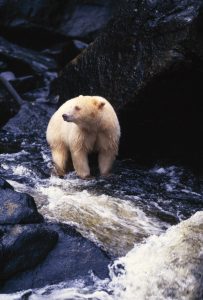
A very interesting observation: in daytime, Kermode bears have better luck catching salmon than their black counterparts. Whereas at night, the success rate for catching fish is the same.
You may wonder why this is so.
Well, the general belief is that their white color serves as a camouflage against the bright sky in daytime.
Therefore, salmon will not detect and evade them as quickly as they would the black bears.
On average, Kermode bears catch up 30 percent more fish than the normal black bears.
6) They Are Not A Type Of Polar Bear.
Contrary to some myths, they are not the “lost” or “closer” cousins of Polar Bears any more than other black bears are.
Also, they are not a subspecies of the “blonde” brown bears of Alaska.
7) Native Tribes Consider Them Sacred.
The First Nations (Tsimshian native communities living in the vicinity) have coexisted with these bears for centuries and they refer to them as moskgm’ol, meaning ‘white bear.’ They view this animal as scared.
8) This Bear Is Well Protected.
The Spirit bear is one of the most protected bears you can find on earth. And, unlike many other indigenous people living with large animals, the Tsimshian people never hunted it for food, medicine, clothe, etc.
In fact, this bear has attained close to celebrity status and it’s the official provincial mammal of British Columbia.
9) Spirit Bears Are An “Umbrella Species.”
This subspecies is allowed a large expanse of virgin forest to roam freely. This habitat, The Great Bear Forest, nurtures a very rich ecosystem that hardly exists in its untouched state anywhere else on the planet.
Of course, other animals dwelling there get to enjoy and share the same ecosystem. Creatures like salmon fish swarm there in multitudes, and other animals like wolves, and grizzlies are common in the territory.
10) They Are Under Threat From Several Factors Mostly Linked To Human Activity.
Although these bears are protected, they don’t live in isolation from the rest of the planet. Hence, eventually what affects one will affect all.
Here are a few threats this creature is facing:
- Deforestation in neighboring regions is pushing other bears like grizzlies into competition with spirit bears. Grizzly bears are large and stronger and they will travel far in search of food. They frequently steal fish from Kermode bears and may even kill them if they put up a fight!
- Interbreeding with other bear species.
- As more roads are laid for better access to some of the more remote areas, there’s a tendency for visitors and hunters to want to poach these very rare and beautiful bears.
- Mother spirit bears commonly make their dens in areas that humans are now marking as “prime timber” for logging. This is really bad news because conflict between bears and humans never goes well.
But, of particular concern in recent time is the plan to lay an oil pipeline through parts of the bears’ home. This pipeline is known as the Northern Gateway Pipeline. If completed, the pipeline will transport hundreds of thousands of barrels of oil daily. A spill or any other mishap would be devastating to say the least.
For now, plans are still on hold regarding this pipeline and the project remains one of the most controversial developments ever in Canada.

